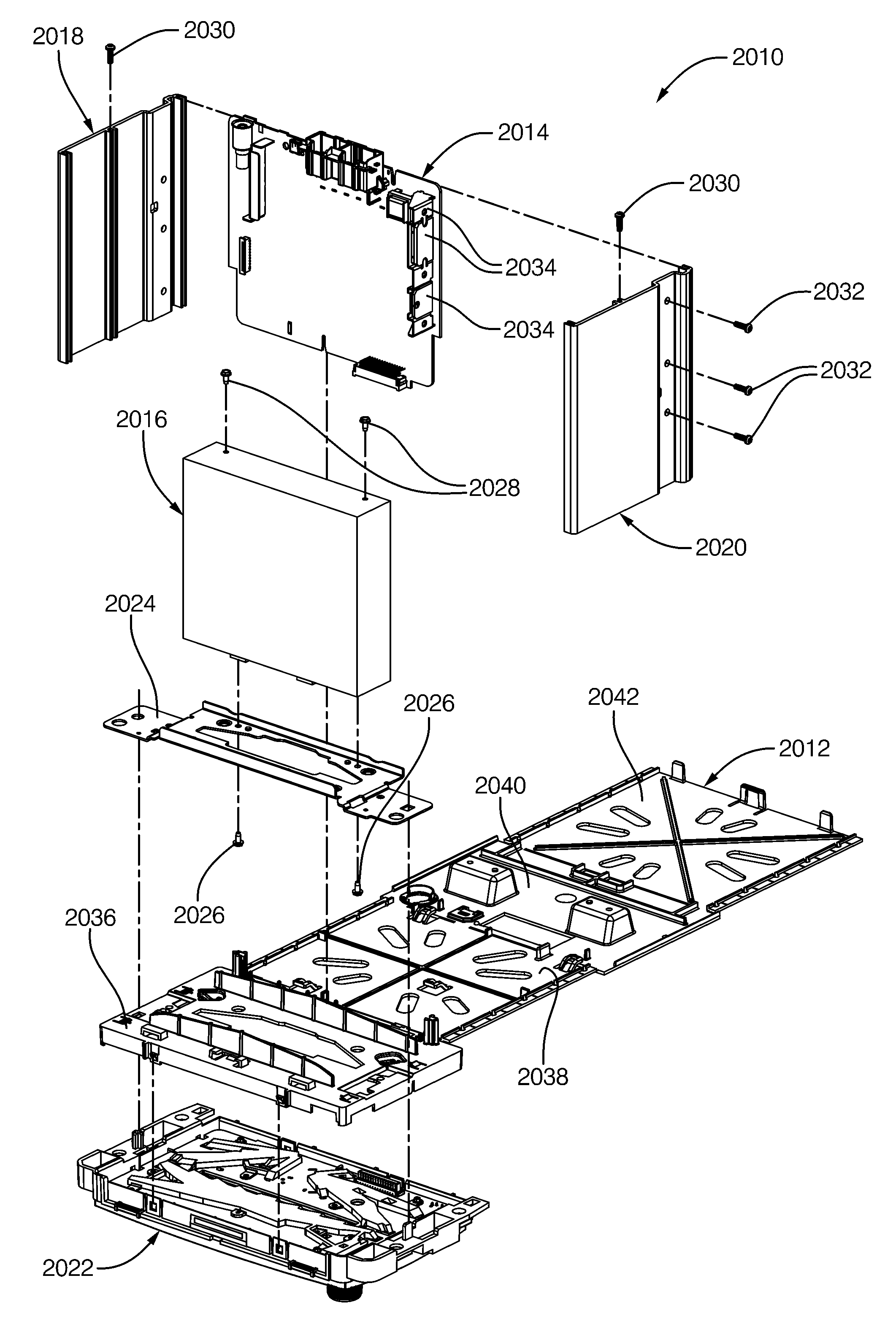Lightweight audio system for automotive applications and method
an audio system and automotive technology, applied in the direction of shielding materials, electrical apparatus casings/cabinets/drawers, instruments, etc., can solve the problems of threaded fasteners, failures in upstream processes, and long assembly cycle time, so as to minimize the number of work stations, reduce the number of required handling, and reduce the cost and labor.
- Summary
- Abstract
- Description
- Claims
- Application Information
AI Technical Summary
Benefits of technology
Problems solved by technology
Method used
Image
Examples
Embodiment Construction
[0087]The present invention can be applied in its broadest sense to electronic devices and systems where shielding from radio frequency interference (RFI), electromagnetic interference (EMI), bulk current injection (BCI) and / or electrostatic discharge (ESD) is required. In addition to vehicle based radios and audio entertainment systems, the invention can be advantageously applied in “infotainment” and telematic systems. Furthermore, the present invention employs virtually “fastenerless” design architecture to facilitate low-cost, high volume production techniques.
[0088]A telematics product is a two-way communication / receiver system that enables access by a vehicle occupant to vehicle related information like geographic position / location through the use of a GPS module with antenna, vehicle diagnostics, crash sensors and air bag deployment. It also contains a phone module that is linked through a microphone in the vehicle and the radio speaker system for hands free calling via voice...
PUM
 Login to View More
Login to View More Abstract
Description
Claims
Application Information
 Login to View More
Login to View More - R&D
- Intellectual Property
- Life Sciences
- Materials
- Tech Scout
- Unparalleled Data Quality
- Higher Quality Content
- 60% Fewer Hallucinations
Browse by: Latest US Patents, China's latest patents, Technical Efficacy Thesaurus, Application Domain, Technology Topic, Popular Technical Reports.
© 2025 PatSnap. All rights reserved.Legal|Privacy policy|Modern Slavery Act Transparency Statement|Sitemap|About US| Contact US: help@patsnap.com



